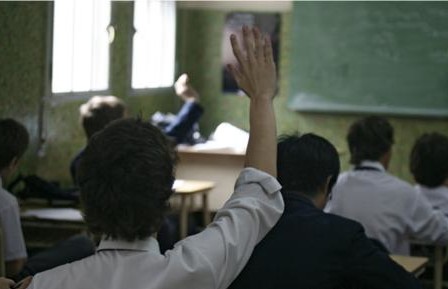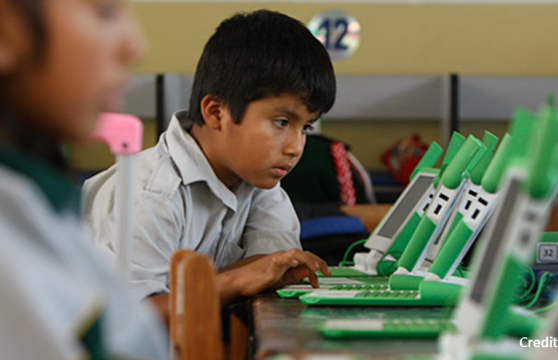
Argentina Refuses to Release Test Scores
Article discusses Argentina’s ban on publishing the results of student achievement tests and its implications for education quality.
This post is also available in: Spanish
The following article by Elena Arias Ortiz and Julian Cristia was originally written for WISE ed.review, a website that offers a daily selection of cutting-edge news, fresh insights and innovative trends in education. WISE has given The Inter-American Dialogue permission to reproduce the piece on the PREAL blog. To read the original article, click here.
Latin American governments have been implementing a variety of initiatives to improve the quality of education in the last decades. In particular, they have invested heavily to introduce technology in schools. In the past few years, about 10 million laptops have been distributed to students in public schools in the region. Have these investments produced the expected results on student learning? What types of technology in education programs are more conducive to spurring student learning?
There are endless numbers of ways in which technology can be integrated into teaching practices. However, we argue that it is useful to classify programs into two broad categories. Programs that provide clear guidance on the frequency and type of expected use can be considered guided-use programs. In contrast, programs that focus mainly on providing resources (computers, the Internet, general training) and provide little guidance on how to use them are considered nonguided-use programs. To operationalize this concept, we classify a program as guided-use if it specifically defines the target subject, the software to be used and weekly use time. That is, a guided-use program specifies the three S’s: Subject, Software and Schedule.
An example of an initiative that did not guide use is the One Laptop per Child (OLPC) program in Peru. In the past few years, the government of Peru aggressively distributed personal laptops for students in primary schools in rural areas. Teachers were trained for one week and also received personal laptops. However, teachers received little specific guidance on how computers should be integrated into pedagogical practices. A solid evaluation found that this program had no measurable effects on math and language.
A program implemented in primary schools in India followed a markedly different approach. It provided students with two weekly hours of computer use focused on math using software that adapted exercise difficulty to individual students. A solid evaluation documented that this program produced large positive effects in math learning. But do these two examples generalize? That is, do programs that guide use tend to be significantly more effective?
Ten years ago, it would have been difficult to answer this question. There was little evidence from rigorous large-scale experimental evaluations (the gold standard to measure program effects). This has changed. In the past few years, 15 solid evaluations have been conducted in developing countries, shedding significant light on the effects of technology in education programs.
At the Inter-American Development Bank (IDB) we have critically reviewed this emerging evidence to understand the impacts that can be expected from these programs and how to maximize them. This exercise has been part of a comprehensive analysis performed to provide recommendations about the programs that the IDB should promote in this area (click here for the full report).
Our analysis revealed that the results from the two examples described above highlight a general pattern: programs that guide the use of technology resources produced increases in average academic achievement about four times greater than those that do not guide them. The higher effectiveness of guided-use programs was documented both in math and language.
In general, the guided-use programs reviewed share certain features.
How do the effects from these two types of programs compare with those arising from other educational interventions? We combined our results with those from a recent review of rigorous evaluations in developing countries of a variety of educational programs such as reductions in class size and teacher training programs. Interestingly, guided-use technology in education programs was the most effective in raising academic achievement among the 10 types of programs considered. In contrast, the nonguided-use programs were among the least effective (they outperformed only programs that provided cash grants for teachers to buy books or other local inputs).
However, not everything that glitters is gold. Guided-use programs vary more in their effects on academic achievement than nonguided-use programs. That is, guided programs generate higher average educational returns but with higher “risks.” In a way, this is not really surprising. Computers distributed through programs that provide little guidance tend not to be used. Because computers are not used, effects are low and similar across interventions. In contrast, programs that guide the use can (and typically do) generate large positive effects. But if they are not well designed, they can harm student learning. This finding provides a strong motivation for experimenting with different models of guided-use programs. It also points to the importance of evaluating small pilots before embarking on large-scale expansions.
Finally, there are some limitations to our analysis. Most experiments of guided-use programs were implemented in India and China whereas nonguided-use programs were concentrated in Latin America and the Caribbean (LAC). Still, even acknowledging that contextual factors can play a role in effects, the evidence suggests that guided-use programs are a promising policy option for countries that seek to unleash the potential of technology for educational purposes. This finding has important policy implications. The first generation of technology in education programs in LAC has been successful in expanding access to technological devices in schools. Now it is crucial that all key actors in this area, public and private sectors, NGOs and multilateral organizations, collaborate to design and implement effective and scalable programs to tackle our main challenge, improving learning in the region.
Article discusses Argentina’s ban on publishing the results of student achievement tests and its implications for education quality.
Study on the potential for and limits to learning associated with the One Laptop per Child program in Peru.
OECD report makes 6 recommendations after analyzing differences in education evaluation strategies.

